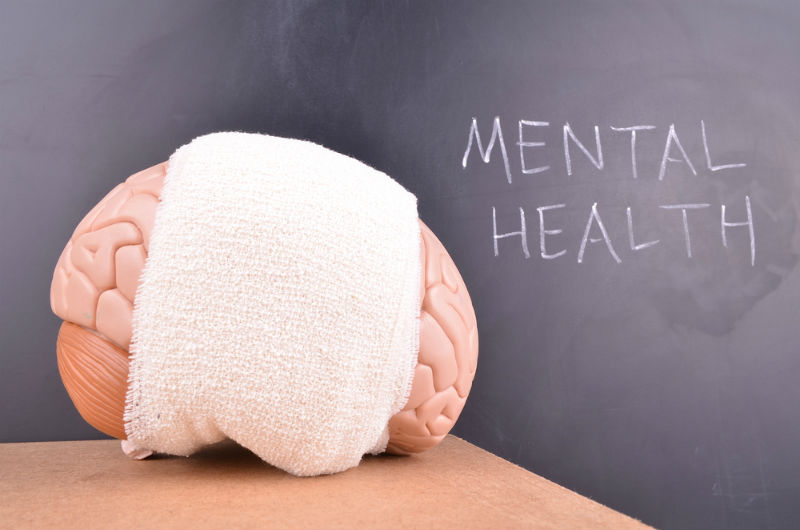I'm trained in Mental Health First Aid - and it was a fascinating, practical course on a critical topic

When you think of first aid, your mind probably turns to bandages, defibrillators and CPR.
For generations, that has been the essence of first aid – delivering immediate assistance and comfort to someone who has suffered a physical injury.
I recently completed a first aid course, and it didn’t teach me how to tie a tourniquet or deliver chest compressions. Instead, it focused on mental health. And I’m betting some of you just rolled your eyes.
Don’t. Keep an open mind. Mental health first aid might be relatively new, but it’s just as critical as physical help in saving lives and — in a workplace context — helping workers stay fit and on the job. It was also a fascinating course to take, and hats off to Thomson Reuters for investing in its employees in this manner and to the Mental Health Commission of Canada for developing such an innovative and practical 12-hour program.
How it works
Mental health first aid has five basic actions. And, like anything else, they are tied to an acronym. In this case, it’s ALGEE. When someone shows up at your door with an issue, there are five basic actions to take:
•Assess the risk of suicide and/or harm
•Listen non-judgmentally
•Give reassurance and information
•Encourage the person to get appropriate professional help
•Encourage other supports
What it does not make you is a professional — just as first-aid training doesn’t qualify you to be an emergency room doctor, mental health first aid does not make you a psychologist. But it gives you the tools to stabilize the person and get them help.
The program was originally developed in Australia, and the Mental Health Commission of Canada adopted its manual from the Australian and Scottish versions. It gives participants a solid grounding in five critical areas.
Mental health and mental health problems: The statistics are stunning — in any given year, one in five Canadians will have a major mental health disorder. In real numbers, that nearly 6.8 million people. More than four million will have mood or anxiety-related disorders, two million will have a substance abuse disorder, 750,000 will have cognitive impairment and dementias and 210,000 will have schizophrenia.
Substance-related disorders: Pretty much everyone uses some type of substance — ranging from alcohol to nicotine to prescription or illegal drugs. But it can take a dark turn when use continues despite physical, mental, social, legal and financial consequences.
Mood-related disorders: There are two types of mood-related disorders — depressive and bipolar. Outward signs of depression include looking sad or dejected, speaking slowly in monotones, unkempt appearance and decreased energy. Symptoms of major depressive disorders include loss of enjoyment, changes in weight and inappropriate feelings of guilt and worthlessness.
Anxiety and trauma-related disorders: Everybody has some level of anxiety, and the course is quick to point out it’s a natural response that is “useful in helping us avoid dangerous situations and motivating us to solve everyday problems.” But it can spiral into a disorder that interferes with everyday life. It also covers off things like panic attacks and post-traumatic stress disorder (PTSD).
Psychotic disorders: This is a severe mental health issue that causes a person to lose touch with reality. It covers off things like schizophrenia and its related symptoms including hallucinations and delusions.
How to help
The course teaches participants practical ALGEE techniques for each of the disorders. There is some advice in there that I found quite surprising. Before taking this course, I would not have asked someone directly if they were feeling suicidal.
But you should ask questions such as “Are you thinking of killing yourself?” and “Are you having thoughts of suicide?” Why? Asking directly shows you care and that you’re ready to talk with them about it.
“The opportunity to discuss the feelings and emotions surrounding thoughts of suicide is often a great relief to people,” the manual states.
If there are thoughts of suicide, the questions probe deep. Do you have a plan? Have you made the preparations? What items are you going to use? If there is immediate risk, you call 911 — calmly explaining what you’re doing and staying with them until help arrives.
But the less dramatic techniques are just as interesting. Listening is incredibly powerful, and it’s important to avoid glib advice such as “pull yourself together” or “cheer up.” Encouraging other supports — including talking directly with family and friends after hours can help. Exercise is also a surprisingly powerful tool — going for a walk, hitting the gym or getting the old gang back together for a game of touch football or whatever your poison is can go a long way.
There is a sign hanging outside my office at Thomson Reuters that states I have been trained in mental health first aid. It states that I can provide immediate support and guidance in a safe environment; I can comfortably have a conversation about mental-health related issues; and you can ask me about professional and other supports — or anything else you have on your mind.
We don’t hesitate to seek first-aid treatment for cuts and bruises. The same should be said for anyone suffering a mental health issue. For more information about mental health first aid, visit www.mentalhealthfirstaid.ca.





